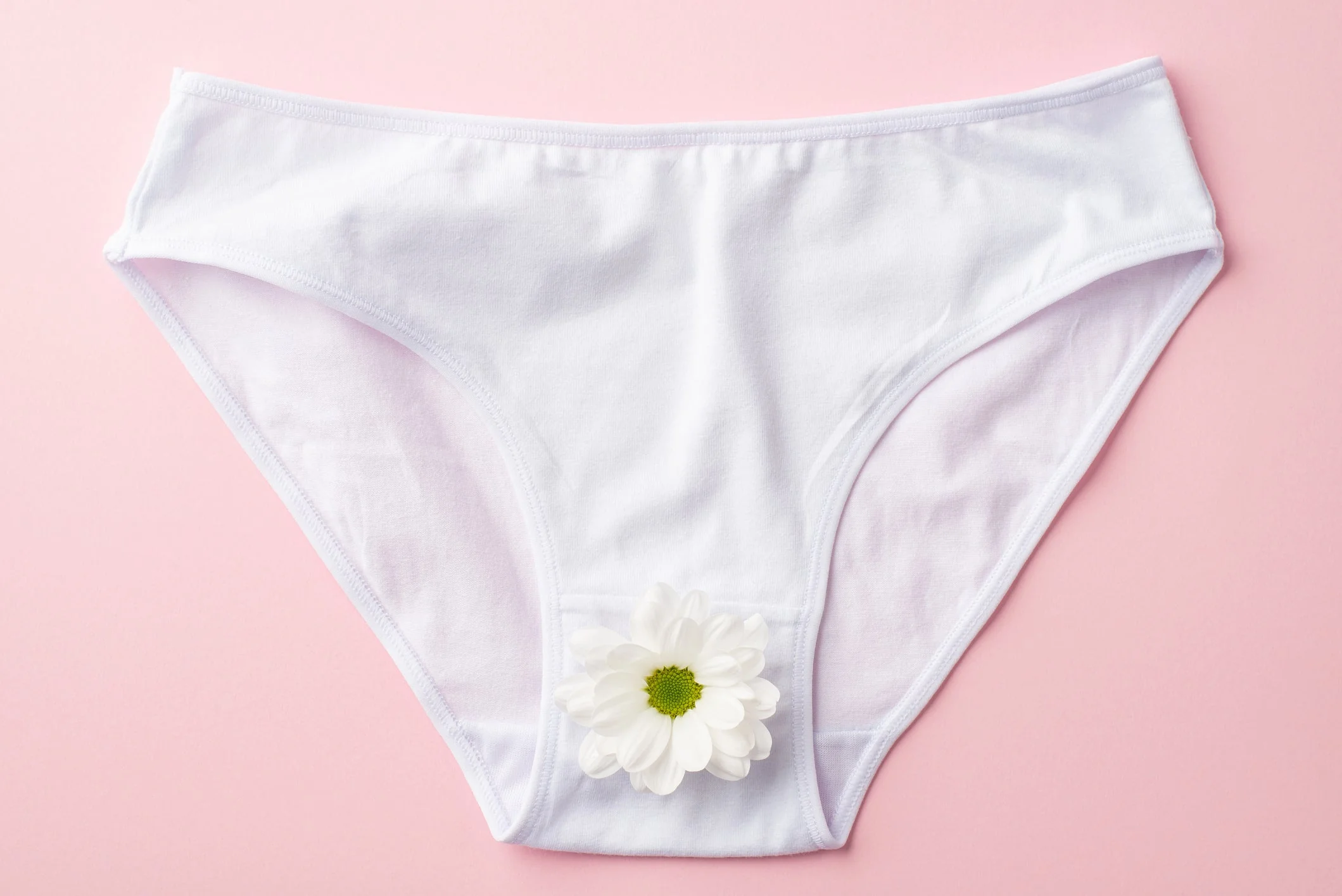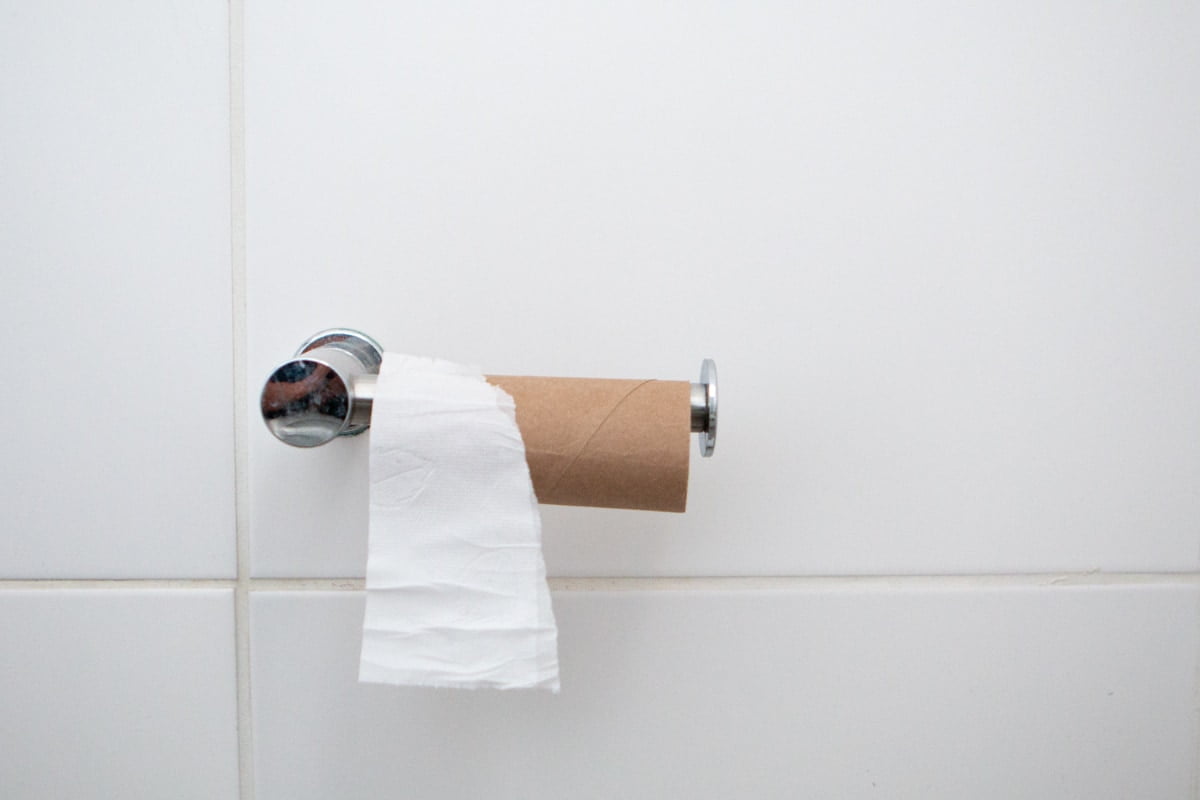

FAQs
Why Do I Get Skid Marks In My Underwear
Modified: August 2, 2023
Discover why you may be experiencing skid marks in your underwear. Find answers to general questions about this common issue.
(Many of the links in this article redirect to a specific reviewed product. Your purchase of these products through affiliate links helps to generate commission for Under-tec.com, at no extra cost. Learn more)
Table of Contents
- Introduction
- Understanding Skid Marks
- Causes of Skid Marks
- Poor Wiping Technique
- Diet and Digestive Issues
- Excessive Sweat or Moisture
- Clothing Material and Fit
- Hygiene Practices
- Remedies for Skid Marks
- Improving Wiping Technique
- Dietary Changes for Better Bowel Movements
- Managing Sweating and Moisture
- Choosing the Right Underwear and Clothing
- Maintaining Good Hygiene
- When to Seek Medical Advice
- Conclusion
Introduction
Welcome! If you’ve ever wondered why you occasionally find skid marks in your underwear, you’re not alone. While it may be an embarrassing topic to discuss, it’s something that many people experience from time to time. Skid marks refer to the unsightly stains or streaks that appear on the back of underwear, typically as a result of inadequate cleanliness after using the toilet.
This article aims to shed light on the causes of skid marks and provide helpful remedies to avoid this common issue. It’s important to note that skid marks can occur for various reasons, including poor wiping technique, diet, excessive sweat or moisture, clothing materials, and hygiene practices. By understanding the underlying factors and implementing simple changes in your routine, you can reduce the likelihood of encountering this issue and maintain better hygiene.
So, if you’ve ever wondered why you get skid marks in your underwear and how to prevent them, keep reading! We’ll delve into the common causes and offer practical solutions to help you tackle this problem head-on.
Understanding Skid Marks
Before we delve into the causes and remedies of skid marks, it’s essential to understand what exactly they are. Skid marks, also known as streaks or stains, refer to the discoloration or residue that appears on the backside of underwear. They are typically brown, yellowish, or gray in color and can range in size and intensity.
Skid marks are primarily caused by insufficient cleanliness after using the toilet, particularly during bowel movements. When fecal matter is not adequately wiped away, it can leave residue on the skin, which then transfers onto underwear. These marks are not only unsightly but can also be a source of embarrassment and discomfort for many individuals.
Skid marks can vary in severity, from minor smudges to more noticeable stains. Factors such as diet, sweat, clothing material, and hygiene practices can further influence the intensity and frequency of skid marks. Understanding these underlying causes can help you address the issue more effectively and implement strategies to prevent or minimize their occurrence.
It’s important to remember that skid marks are a common problem that many people face, regardless of age, gender, or overall health. While it may be a sensitive topic to discuss, finding solutions and tips to tackle skid marks can greatly improve your comfort, confidence, and overall well-being.
Causes of Skid Marks
Skid marks can occur for various reasons, and understanding these causes can help you address the issue more effectively. Here are some common factors that contribute to the presence of skid marks:
- Poor Wiping Technique: One of the primary causes of skid marks is inadequate cleaning after a bowel movement. Improper wiping technique, such as not wiping thoroughly or using harsh or rough toilet paper, can leave behind residual fecal matter on the skin, which can then transfer onto underwear.
- Diet and Digestive Issues: Your diet plays a significant role in the consistency and color of your bowel movements. A diet lacking in fiber can result in loose stools or difficulty in fully evacuating the bowels, increasing the chances of skid marks. Additionally, certain digestive conditions, such as irritable bowel syndrome (IBS) or inflammatory bowel disease (IBD), can also contribute to skid marks.
- Excessive Sweat or Moisture: Excessive sweating, particularly in the buttocks area, can create a moist environment that makes it easier for skid marks to develop. This is more common in individuals who are physically active or live in hot and humid climates.
- Clothing Material and Fit: The material and fit of your underwear can also impact the occurrence of skid marks. Underwear made from non-absorbent materials or those that are too tight can trap moisture and contribute to the development of skid marks.
- Hygiene Practices: Inadequate hygiene practices, such as not properly washing the anal area or neglecting to change underwear regularly, can contribute to the persistence of skid marks. It’s essential to maintain good hygiene habits to reduce the likelihood of skid marks.
By recognizing these causes, you can begin to address the issue of skid marks more effectively. The next section will provide remedies and strategies to help you prevent or minimize the occurrence of skid marks in your underwear.
Poor Wiping Technique
One of the primary causes of skid marks is poor wiping technique after using the toilet. Inadequate cleaning can leave behind residual fecal matter on the skin, which can then transfer onto underwear. Here are some tips to improve your wiping technique and prevent skid marks:
- Use the Right Toilet Paper: Choose a soft and gentle toilet paper that is strong enough to get the job done without causing irritation. Avoid using rough or harsh toilet papers, as they can be abrasive to the skin.
- Wipe Thoroughly: Take your time to wipe thoroughly after each bowel movement. Use gentle but firm strokes, ensuring that you clean from front to back. This helps to prevent the transfer of bacteria from the anus to the urethra in women and reduces the chances of skid marks.
- Use Moist Toilet Wipes: Consider using moist toilet wipes or baby wipes to enhance cleanliness. These wipes provide a more thorough cleaning and can help remove any residual fecal matter more effectively.
- Don’t Rush: Avoid rushing through the wiping process. Take the time to ensure that you have cleaned the area adequately. Rushing can lead to incomplete cleaning and increase the likelihood of skid marks.
- Wash the Anal Area: After wiping, it can be beneficial to wash the anal area with warm water and mild soap. This helps to remove any remaining residue and leaves you feeling fresh and clean.
- Pat Dry: Once you have cleaned the area, gently pat dry with a clean towel or toilet paper. Avoid rubbing vigorously, as this can cause irritation or further spread bacteria.
- Consider Using a Bidet: Installing a bidet attachment in your toilet can provide a more thorough cleaning experience. Bidets use water to cleanse the anal area, effectively removing any residue and reducing the chances of skid marks.
By implementing these techniques and being mindful of your wiping habits, you can significantly reduce the occurrence of skid marks and maintain better cleanliness after using the toilet.
Diet and Digestive Issues
The food we consume plays a crucial role in the consistency and color of our bowel movements. A poor diet lacking in fiber can contribute to digestive issues and increase the likelihood of skid marks in underwear. Here’s how diet and digestive issues can affect the presence of skid marks:
Inadequate Fiber Intake: A diet low in fiber can result in irregular bowel movements and stool consistency. When the stool is loose or not well-formed, proper cleaning becomes more challenging, increasing the chances of residue remaining on the skin and causing skid marks. Including fiber-rich foods such as fruits, vegetables, whole grains, and legumes in your diet can promote regular bowel movements and help prevent skid marks.
Insufficient Water Intake: Dehydration can contribute to constipation, making it harder to fully evacuate the bowels during a bowel movement. Incomplete bowel movements may result in residues being left behind, leading to skid marks. Ensure you are drinking enough water throughout the day to stay properly hydrated and maintain healthy digestion.
Digestive Conditions: Certain digestive conditions, such as irritable bowel syndrome (IBS) or inflammatory bowel disease (IBD), can cause changes in stool consistency and increase the likelihood of skid marks. If you suspect you have an underlying digestive issue, it is important to consult with a healthcare professional for proper diagnosis and management.
Food Sensitivities and Allergies: Some individuals may have food sensitivities or allergies that can affect their digestion. Consuming trigger foods can lead to irregular bowel movements and contribute to skid marks. Identifying and avoiding these trigger foods can help alleviate digestive issues and reduce the occurrence of skid marks.
By maintaining a healthy and balanced diet, including an adequate intake of fiber and water, and being aware of any food sensitivities or allergies, you can support your digestive health and minimize the chances of skid marks in your underwear.
Excessive Sweat or Moisture
Excessive sweating, particularly in the buttocks area, can contribute to the development of skid marks. Sweat and moisture create a conducive environment for bacteria growth, increasing the likelihood of stains and odors. Here’s how to manage excessive sweat or moisture to prevent skid marks:
Choose Breathable Fabrics: Opt for underwear and clothing made from breathable fabrics, such as cotton, that allow air circulation. These materials help absorb moisture and reduce the chances of excessive sweating and the subsequent formation of skid marks.
Avoid Tight-Fitting Clothing: Wearing tight-fitting clothing can cause friction and trapping of moisture in the buttocks area. This can contribute to increased sweating and the development of skid marks. Opt for looser-fitting clothing that allows for better airflow and reduces the accumulation of sweat.
Stay Hygienic: Good hygiene practices are essential in managing excessive sweat or moisture. Regularly showering and washing the buttocks area with mild soap and warm water can help remove sweat and bacteria. After showering, make sure to thoroughly dry the area to prevent moisture buildup.
Use Antiperspirants or Powders: Applying antiperspirants or powders to the buttocks area can help reduce sweating and absorb moisture. Look for products specifically designed for sensitive skin and choose ones that are free from harsh chemicals or fragrances.
Change Clothing Promptly: If you find yourself sweating excessively or if your clothing becomes damp, it’s important to change into dry clothes as soon as possible. This helps prevent the buildup of moisture and reduces the risk of developing skid marks.
Consider Absorbent Liners: In cases of excessive sweating, using absorbent liners or pads in your underwear can provide an extra layer of protection. These liners can help absorb sweat and prevent it from coming into direct contact with your underwear, reducing the chances of skid marks.
By implementing these strategies and managing excessive sweat or moisture effectively, you can reduce the occurrence of skid marks and maintain better hygiene in the buttocks area.
Clothing Material and Fit
The material and fit of your underwear and clothing can impact the occurrence of skid marks. The wrong choice of fabric or a tight fit can contribute to moisture buildup, friction, and increased sweating, all of which can lead to skid marks. Here’s what you need to know about clothing material and fit to prevent skid marks:
Choose Moisture-Wicking Fabrics: Opt for underwear and clothing made from moisture-wicking materials such as cotton or synthetic blends. These fabrics draw moisture away from the skin, keeping you dry and reducing the chances of excessive sweating and skid marks.
Avoid Non-Breathable Materials: Fabrics that do not allow for adequate airflow can trap moisture in the buttocks area, creating a conducive environment for the development of skid marks. Avoid materials like nylon or polyester, as they tend to retain moisture and heat.
Opt for Loose-Fitting Clothing: Wearing tight-fitting underwear or clothing can cause friction and increase sweat accumulation in the buttocks area. This can lead to skid marks. Instead, choose underwear and clothing with a looser fit that allows for better airflow and reduces moisture buildup.
Consider Seamless Underwear: Seams on underwear can cause irritation and rubbing against the skin, leading to increased sweat and skid marks. Consider opting for seamless underwear, which reduces friction and provides a smoother, more comfortable fit.
Size Up if Necessary: If your current underwear feels too tight or constricting, it may be beneficial to size up. Wearing underwear that is too small can contribute to sweat and moisture accumulation, leading to an increased likelihood of skid marks. Ensure that your underwear fits comfortably without being too tight.
Try Different Styles: Experiment with different underwear styles to find what works best for you. Some styles, such as boxer briefs or briefs with a higher rise, may provide better coverage and reduce the risk of skid marks compared to other styles.
Change Clothing Frequently: Regularly changing your underwear and clothing is important to maintain freshness and reduce the chances of skid marks. If you sweat excessively or if your clothing becomes damp, it’s recommended to change into dry clothing to prevent moisture buildup.
By selecting underwear and clothing made from breathable fabrics, opting for a looser fit, and practicing good hygiene, you can minimize the occurrence of skid marks and promote better comfort and cleanliness.
Hygiene Practices
Ensuring good hygiene practices is crucial in preventing skid marks and maintaining overall cleanliness in the anal area. Here are some essential hygiene practices to incorporate into your routine:
Regular Showering: Take regular showers to keep your body clean, paying particular attention to the anal area. Use mild soap and warm water to thoroughly cleanse the area and remove any bacteria or fecal residue that may contribute to skid marks.
Proper Wiping Technique: As discussed earlier, adopting a proper wiping technique after using the toilet is essential. Ensure that you wipe front to back to avoid spreading bacteria from the anal area to the urethra or vagina (in women). Remember to wipe thoroughly to remove any residual fecal matter and minimize the chances of skid marks.
Use Mild Cleansers: When washing the anal area, avoid using harsh soaps, fragrances, or douches that can disrupt the natural balance of bacteria and irritate the skin. Opt for mild cleansers or soaps specifically formulated for sensitive areas to maintain optimal hygiene without causing irritation.
Avoid Excessive Scrubbing: While it’s important to maintain good cleanliness, avoid excessive scrubbing or harsh rubbing of the anal area. Overly aggressive cleaning can cause irritation, inflammation, and discomfort. Instead, be gentle and pat dry the area after washing.
Change Underwear Regularly: Changing your underwear daily is essential for maintaining hygiene and reducing the chances of skid marks. Regularly changing into clean underwear helps prevent the buildup of bacteria, sweat, and residual fecal matter that can contribute to skid marks and unpleasant odor.
Practice Proper Laundry Hygiene: Ensure that you wash your underwear properly and with adequate disinfectants. Use hot water, if possible, and appropriate detergents to kill bacteria and remove any stains or odors. Avoid using fabric softeners and dryer sheets, as they can irritate the sensitive skin in the anal area.
Maintain Personal Dryness: After washing the anal area, pat it dry with a clean towel or use a hairdryer on a low, cool setting to ensure that the area is completely dry. Moisture can contribute to the growth of bacteria and increase the likelihood of skid marks.
Schedule Regular Check-ups: If you are consistently experiencing skid marks or have concerns about your bowel movements or anal health, it is important to consult with a healthcare professional. They can evaluate your symptoms, provide guidance, and address any underlying medical conditions that may be contributing to the issue.
By incorporating these hygiene practices into your daily routine, you can maintain cleanliness, reduce the chances of skid marks, and promote overall anal health.
Remedies for Skid Marks
Dealing with skid marks can be uncomfortable and embarrassing. Fortunately, there are several remedies and strategies that can help prevent or minimize their occurrence. Here are some effective remedies for skid marks:
Improving Wiping Technique: Enhancing your wiping technique can significantly reduce the chances of skid marks. Take your time to wipe thoroughly and make sure to clean from front to back to prevent the transfer of bacteria. Consider using moist toilet wipes for a more comprehensive cleaning and a fresh feeling.
Dietary Changes for Better Bowel Movements: Make dietary changes to promote healthy bowel movements and reduce the risk of skid marks. Increase your fiber intake by incorporating fruits, vegetables, whole grains, and legumes into your diet. Drink plenty of water and avoid trigger foods that may contribute to loose stools or digestive issues.
Managing Sweating and Moisture: To combat excessive sweating and moisture in the buttocks area, choose breathable fabrics for your underwear and clothing. Opt for moisture-wicking materials like cotton or synthetic blends. Consider using absorbent liners or pads for additional protection, and change into dry clothes promptly if you sweat excessively or if your clothing becomes damp.
Choosing the Right Underwear and Clothing: Select underwear that fits well, provides adequate coverage, and is made from breathable fabrics. Avoid tight-fitting clothing that can trap moisture and contribute to friction. Seamless underwear can help reduce irritation and rubbing, which can lead to skid marks.
Maintain Good Hygiene: Practice proper hygiene habits by showering regularly, paying attention to the anal area, and using mild cleansers specifically formulated for sensitive skin. Change your underwear daily and ensure it is properly washed and dried to maintain freshness and minimize the growth of bacteria.
When to Seek Medical Advice: If skid marks persist despite implementing these remedies or if you have persistent digestive issues or other concerning symptoms, it is important to consult with a healthcare professional. They can provide a proper diagnosis, rule out any underlying medical conditions, and recommend further treatment or interventions if needed.
Remember, implementing these remedies and strategies requires consistency and patience. It may take time to find the right combination of practices that work for you. With perseverance and a proactive approach, you can effectively manage skid marks and improve your overall comfort and confidence.
Improving Wiping Technique
One of the primary causes of skid marks is poor wiping technique after using the toilet. Inadequate cleaning can leave behind residual fecal matter on the skin, which can then transfer onto underwear. Here are some tips to improve your wiping technique and prevent skid marks:
- Use the Right Toilet Paper: Choose a soft and gentle toilet paper that is strong enough to get the job done without causing irritation. Avoid using rough or harsh toilet papers, as they can be abrasive to the skin.
- Wipe Thoroughly: Take your time to wipe thoroughly after each bowel movement. Use gentle but firm strokes, ensuring that you clean from front to back. This helps to prevent the transfer of bacteria from the anus to the urethra in women and reduces the chances of skid marks.
- Use Moist Toilet Wipes: Consider using moist toilet wipes or baby wipes to enhance cleanliness. These wipes provide a more thorough cleaning and can help remove any residual fecal matter more effectively.
- Don’t Rush: Avoid rushing through the wiping process. Take the time to ensure that you have cleaned the area adequately. Rushing can lead to incomplete cleaning and increase the likelihood of skid marks.
- Wash the Anal Area: After wiping, it can be beneficial to wash the anal area with warm water and mild soap. This helps to remove any remaining residue and leaves you feeling fresh and clean.
- Pat Dry: Once you have cleaned the area, gently pat dry with a clean towel or toilet paper. Avoid rubbing vigorously, as this can cause irritation or further spread bacteria.
- Consider Using a Bidet: Installing a bidet attachment in your toilet can provide a more thorough cleaning experience. Bidets use water to cleanse the anal area, effectively removing any residue and reducing the chances of skid marks.
By implementing these techniques and being mindful of your wiping habits, you can significantly reduce the occurrence of skid marks and maintain better cleanliness after using the toilet.
Dietary Changes for Better Bowel Movements
Your diet plays a crucial role in the consistency and frequency of your bowel movements. Making dietary changes can help promote better bowel movements and reduce the chances of skid marks. Here are some dietary tips to improve your bowel movements:
- Increase Fiber Intake: Eating a diet rich in fiber is essential for maintaining proper bowel movements. Fiber adds bulk to the stool, making it easier to pass and reducing the likelihood of skid marks. Include plenty of fruits, vegetables, whole grains, nuts, and legumes in your diet.
- Choose Whole Grains: Opt for whole grain products, such as whole wheat bread, brown rice, and whole grain cereals. These foods are high in fiber and can help regulate bowel movements.
- Add More Fruits and Vegetables: Fruits and vegetables are excellent sources of fiber and can promote regular bowel movements. Aim for a variety of colorful fruits and vegetables to ensure you’re getting a wide range of nutrients.
- Stay Hydrated: Drinking an adequate amount of water is crucial for maintaining healthy bowel movements. Water helps soften the stool, making it easier to pass and reducing the chances of skid marks. Aim for at least 8 glasses of water per day.
- Avoid Trigger Foods: Some foods can contribute to looser stools or digestive issues, increasing the likelihood of skid marks. Pay attention to your body’s reaction to certain foods and avoid those that trigger discomfort or irregular bowel movements.
- Add Probiotic-Rich Foods: Probiotics help promote a healthy gut and aid in digestion. Incorporate foods like yogurt, kefir, sauerkraut, and kimchi into your diet to support healthy bowel movements.
- Manage Portion Sizes: Overeating can lead to digestive issues and irregular bowel movements. Eat smaller, more frequent meals to help maintain healthy digestion and prevent skid marks.
- Exercise Regularly: Physical activity can stimulate bowel movements and improve digestion. Aim for at least 30 minutes of moderate exercise most days of the week to promote better bowel movements.
Remember, dietary changes may take some time to show their full effects. It’s important to be patient and consistent with these changes for better bowel movements and to reduce the chances of skid marks.
Managing Sweating and Moisture
Excessive sweating and moisture in the buttocks area can contribute to the development of skid marks. However, there are several strategies you can implement to manage sweating and moisture effectively. Here are some tips to help you keep sweat and moisture under control:
- Choose Breathable Fabrics: Opt for underwear and clothing made from breathable fabrics, such as cotton or moisture-wicking materials. These fabrics allow for better airflow, reducing the chances of excessive sweating and moisture buildup in the buttocks area.
- Avoid Tight-Fitting Clothing: Wearing tight-fitting clothing can trap moisture, leading to increased sweating and the development of skid marks. Opt for looser-fitting clothing that allows for better ventilation and minimizes sweat accumulation.
- Shower Regularly: Take regular showers to cleanse the body and remove sweat. Pay particular attention to the buttocks area, using mild soap and warm water to thoroughly clean and refresh the region.
- Use Antiperspirants or Powders: Applying antiperspirants or absorbent powders in the buttocks area can help minimize sweating and absorb excess moisture. Look for products specifically formulated for sensitive skin to prevent irritation.
- Consider Absorbent Liners or Pads: In cases of excessive sweating, using absorbent liners or pads in your underwear can provide an extra layer of protection. These products help absorb and lock away moisture, reducing the chances of skid marks.
- Avoid Sitting for Prolonged Periods: Sitting for extended periods can trap heat and moisture, leading to increased sweating. Take frequent breaks to move around and allow for air circulation, especially in warm or humid environments.
- Change Clothes Promptly: If you sweat excessively or if your clothing becomes damp, change into clean, dry clothes as soon as possible. This prevents prolonged exposure to sweat and moisture, reducing the likelihood of skid marks.
- Use Absorbent Towels: After showering or exercise, use absorbent towels to thoroughly dry the buttocks area. Pat gently to remove excess moisture and ensure the region is completely dry before getting dressed.
By implementing these strategies and managing sweating and moisture effectively, you can minimize the occurrence of skid marks and maintain a drier, fresher buttocks area.
Choosing the Right Underwear and Clothing
The type of underwear and clothing you choose can significantly impact the occurrence of skid marks. To prevent skid marks and promote better hygiene, it’s important to select the right materials and fit. Here’s what to consider when choosing underwear and clothing:
- Opt for Breathable Fabrics: Choose underwear and clothing made from breathable fabrics, such as cotton or moisture-wicking materials. These fabrics allow for proper airflow and prevent moisture buildup, reducing the chances of excessive sweating and skid marks.
- Avoid Non-Breathable Materials: Materials like nylon or polyester tend to trap moisture and heat, leading to increased sweating and the development of skid marks. Opt for natural fibers or moisture-wicking fabrics to keep the buttocks area dry.
- Consider Seamless Underwear: Seams on underwear can cause friction and irritate the skin, leading to increased sweat and potentially more skid marks. Consider opting for seamless underwear, which reduces friction and provides a smoother, more comfortable fit.
- Choose the Right Size: Wearing underwear that is too tight or too loose can contribute to skid marks. Ensure that your underwear fits properly and provides adequate coverage. Opt for a size that is comfortable without being too tight or restrictive.
- Consider Different Styles: Different underwear styles may work better for certain individuals. Experiment with various styles, such as boxer briefs, briefs, or trunks, to find what works best for you in terms of fit, comfort, and prevention of skid marks.
- Change Underwear Regularly: Regularly changing your underwear is essential for maintaining cleanliness and reducing the chances of skid marks. Ensure that you have a sufficient supply of clean underwear and change it daily to prevent the buildup of bacteria and moisture.
- Choose Clothing with a Looser Fit: Opt for looser-fitting clothing, especially around the buttocks area, to allow for better airflow and reduce moisture buildup. Avoid tight-fitting clothing that can trap sweat and contribute to skid marks.
- Select Appropriate Clothing for Physical Activity: When engaging in physical activity or exercise, choose moisture-wicking and breathable clothing that helps keep you dry. Consider wearing moisture-wicking shorts or leggings to minimize the chances of skid marks caused by excessive sweating.
By considering these factors when selecting underwear and clothing, you can improve comfort, reduce excessive sweating, and minimize the occurrence of skid marks.
Maintaining Good Hygiene
Good hygiene practices are essential to prevent skid marks and maintain overall cleanliness in the anal area. By following proper hygiene practices, you can reduce the chances of skid marks and promote better personal hygiene. Here are some key practices to incorporate into your routine:
- Regular Showering: Take regular showers to keep your body clean, paying particular attention to the anal area. Use mild soap and warm water to thoroughly cleanse the area and remove any bacteria or fecal residue that may contribute to skid marks.
- Proper Wiping Technique: As discussed earlier, adopting a proper wiping technique after using the toilet is essential. Ensure that you wipe front to back to avoid spreading bacteria from the anal area to the urethra or vagina (in women). Remember to wipe thoroughly to remove any residual fecal matter and minimize the chances of skid marks.
- Use Mild Cleansers: When washing the anal area, avoid using harsh soaps, fragrances, or douches that can disrupt the natural balance of bacteria and irritate the skin. Opt for mild cleansers or soaps specifically formulated for sensitive areas to maintain optimal hygiene without causing irritation.
- Avoid Excessive Scrubbing: While it’s important to maintain good cleanliness, avoid excessive scrubbing or harsh rubbing of the anal area. Overly aggressive cleaning can cause irritation, inflammation, and discomfort. Instead, be gentle and pat dry the area after washing.
- Change Underwear Regularly: Changing your underwear daily is essential for maintaining hygiene and reducing the chances of skid marks. Regularly changing into clean underwear helps prevent the buildup of bacteria, sweat, and residual fecal matter that can contribute to skid marks and unpleasant odor.
- Practice Proper Laundry Hygiene: Ensure that you wash your underwear properly and with adequate disinfectants. Use hot water, if possible, and appropriate detergents to kill bacteria and remove any stains or odors. Avoid using fabric softeners and dryer sheets, as they can irritate the sensitive skin in the anal area.
- Maintain Personal Dryness: After washing the anal area, pat it dry with a clean towel or use a hairdryer on a low, cool setting to ensure that the area is completely dry. Moisture can contribute to the growth of bacteria and increase the likelihood of skid marks.
- Schedule Regular Check-ups: If you are consistently experiencing skid marks or have concerns about your bowel movements or anal health, it is important to consult with a healthcare professional. They can evaluate your symptoms, provide guidance, and address any underlying medical conditions that may be contributing to the issue.
By incorporating these hygiene practices into your daily routine, you can maintain cleanliness, reduce the chances of skid marks, and promote overall anal health.
When to Seek Medical Advice
For most people, skid marks can be managed effectively with proper hygiene and lifestyle changes. However, there are instances when it is important to seek medical advice. Here are some situations in which you should consider consulting with a healthcare professional:
- Persistent Skid Marks: If you consistently experience skid marks despite implementing various remedies and preventive measures, it may be worthwhile to seek medical advice. A healthcare professional can help evaluate the underlying cause and recommend appropriate treatment options.
- Chronic Digestive Issues: If you have ongoing digestive issues, such as chronic diarrhea, constipation, or abdominal pain, it’s important to consult with a healthcare professional. These symptoms may be indicative of an underlying condition that requires medical attention.
- Unexplained Weight Loss: If you experience unexplained weight loss along with skid marks or other digestive symptoms, it could be a sign of a more serious underlying condition. It’s crucial to consult with a healthcare professional to determine the cause and receive proper treatment.
- Blood in Stool: If you notice blood in your stool or on the toilet paper, it’s essential to seek immediate medical attention. Blood in the stool can indicate a more severe issue, such as hemorrhoids, anal fissures, or even colorectal cancer, and should not be ignored.
- Change in Bowel Habits: If you experience a sudden and unexplained change in your bowel habits, such as persistent diarrhea or constipation, it’s important to consult with a healthcare professional. They can evaluate your symptoms and determine if further investigation or treatment is needed.
- Associated Symptoms: If skid marks are accompanied by other concerning symptoms, such as severe abdominal pain, fever, or unintentional weight loss, it is important to seek medical advice. These symptoms may be indicative of a more significant underlying condition that requires evaluation and treatment.
- Personal Concerns or Anxiety: If skid marks are causing significant distress, anxiety, or affecting your quality of life, it is recommended to consult with a healthcare professional. They can provide reassurance, offer guidance, and address any concerns you may have.
Remember, your healthcare provider is the best resource to understand your specific situation and provide appropriate advice or treatment. If you have any doubts, it’s always better to seek medical guidance.
Conclusion
Skid marks in underwear can be a common and embarrassing issue, but with the right knowledge and strategies, you can prevent and manage them effectively. By understanding the causes of skid marks, such as poor wiping technique, diet, excessive sweat or moisture, clothing materials, and hygiene practices, you can make necessary adjustments to minimize their occurrence.
Improving your wiping technique by using gentle strokes, moist toilet wipes, and practicing thorough cleaning can significantly reduce the chances of skid marks. Modifying your diet to include fiber-rich foods, staying hydrated, and avoiding trigger foods can promote better bowel movements and minimize the risk of skid marks.
Managing excessive sweat or moisture by choosing breathable fabrics, changing clothes promptly, and using appropriate absorbent products can help prevent the development of skid marks. Selecting the right underwear and clothing, such as breathable fabrics, a comfortable fit, and seamless options, can also contribute to reducing skid marks.
Consistently maintaining good hygiene practices, including regular showering, proper wiping technique, using mild cleansers, and changing underwear regularly, is crucial to prevent skid marks. Additionally, knowing when to seek medical advice, such as when skid marks persist, if there are associated symptoms, or if there are concerns about underlying conditions, is important for proper evaluation and treatment.
Remember, every individual’s experience with skid marks may vary, and it may take time and experimentation to find the right combination of strategies that work for you. By implementing these remedies and strategies, you can improve your overall comfort, confidence, and hygiene, ultimately reducing the chances of encountering skid marks in your underwear.










